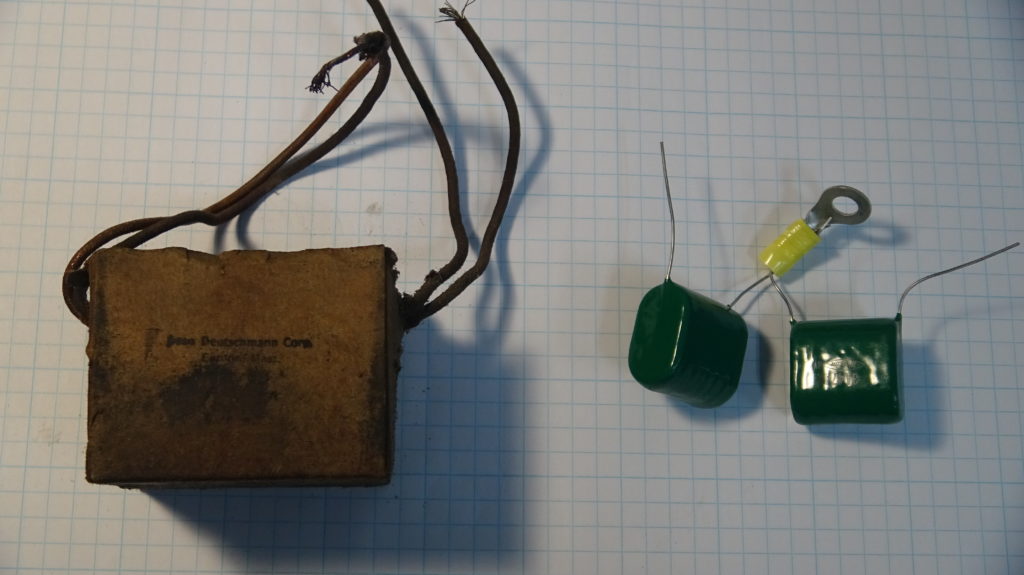As we started to become familiar with our new Blue Box and how it was supposed to work, we needed to decide how faithfully to the original we could restore it. We went through each subsystem, checked to see if it existed in our trainer, and to what level it could be restored. We felt that a total faithful restoration was beyond us because components such as wax capacitors, selenium rectifiers, porcelain switches, etc. were bad due to age or just plain worn out; exact replacements no longer exist. Phenolic is used throughout the trainer. Cloth-covered wire, real rubber, real leather, and no plastic make it hard to faithfully replace parts in today’s world of available materials. This trainer was missing key pieces such as the wind drift mechanism, connectors, and even the spindle. We hope to restore it to at least some level of flyable. For a functional system, we felt that some level of compromise was in order. We settled on using everything original that we could, but were willing to substitute modern materials and components where necessary. Our rule-of-thumb is “if today’s technician needed to get the system ready to train a pilot, what minimum compromises would he make in order to make it functional?” We also want the system to look nice, so modern paint, glues, etc. are in order.

The very first subsystem we tried to restore was the vacuum turbine. And the first irreplaceable component turned out to be its Tobe Deutchmann dual noise-suppression condenser (left side of picture). We measured this big old wax capacitor — zero microfarads. We substituted two small modern caps. More about the turbine is discussed in the “Blue Box restoration hints” pages.
